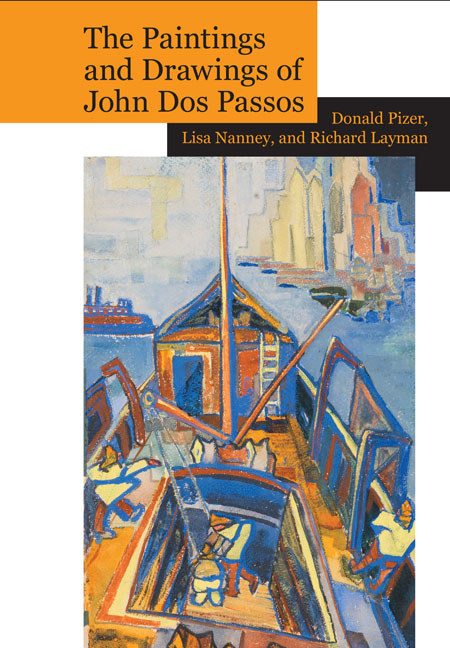Words and Images: The Visual Art of John Dos Passos
Summary
In his fiction, John Dos Passos always pictured his world and his times; he chronicled his nation and its history; and he consistently looked for the narrative structure, the form, that would be truest to his picture. With such forms he hoped to evoke reading as acutely active as his writing was; he hoped to create narratives that transcended the limitations of the page as it had conventionally been constructed. To make “the bloody panorama of history … stand up off the page,” he almost always looked beyond the verbal to the visual arts, to “record the fleeting world the way the motion picture recorded it.” Beginning with his earliest searches for form, he found the most vital picture of the world in sculpture, architecture, and, most often, cinema and painting, two forms of expression that especially absorbed and reflected “the creative tidal wave that spread over the world” and transformed all the arts in the early twentieth century.
As prolific and diverse a writer as he was in his lifetime, he was equally prolific and experimental in his painting, the “second talent” he practiced as long as he wrote, as long as he lived. And his paintings can provide a pictorial guide through the aesthetic and intellectual directions that defined his career. The visual works in this volume illuminate Dos Passos's literary works in distinctive ways: they chart his artistic evolution toward modernism; they act as visual corollaries to his creations in genres other than the novel; and they demonstrate the cultural and geographical breadth of his life as well as his creative output.
The Making of a Modernist: Early Painting and Early Writing
In 1971 Dos Passos's paintings were part of an exhibition at the Arts Club of Chicago of visual art by writers as diverse and highly regarded as Harriett Beecher Stowe, William Butler Yeats, James Joyce, and E. E. Cummings. The show's title, “A Second Talent,” implied that their first talent was writing, what Dos Passos was best known for during his long, varied career.
- Type
- Chapter
- Information
- Publisher: Liverpool University PressPrint publication year: 2016



